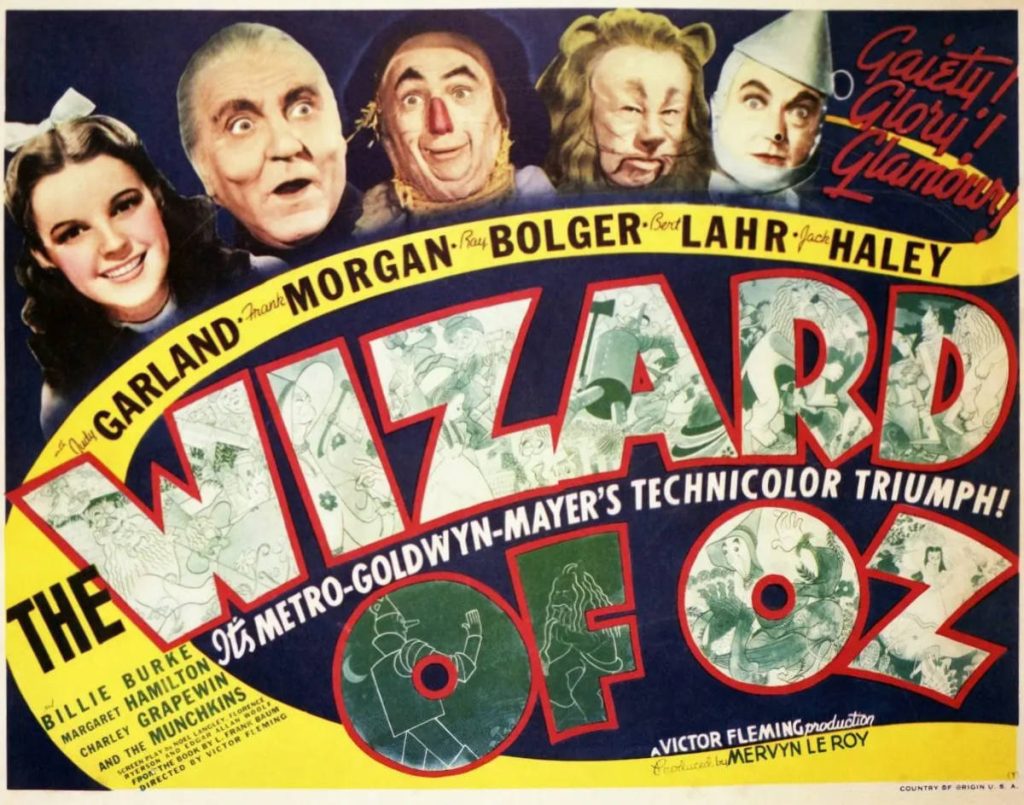Without the storytelling insights learned from admired writing teachers, I’d still drift in my efforts to strike resonating chords with audiences. I learned the real magic happens when you personalize story structure, enabling you to write a book readers will love.
Dare to Personalize Story Structure
Time-proven story structures inspired me to create Story Beats. The name is not important. What’s significant is these 18 beats allow you to break down films and books into patterns that consistently work. Those effective formats are as old as storytelling.
There are several formats, but stick with me through this multi-part series, and I’ll use Story Beats to show you how to personalize the structure.
Follow Principles, Not Rules
Story Beats are useful for interpreting and writing stories, but not as rules. You choose what works for the stories you want to tell.
Analyzing a Masterwork Helps You Personalize Story Structure
Most have seen The Wizard of Oz film from 1939, but fewer have read L. Frank Baum’s novel The Wonderful Wizard of Oz. In this series of posts, I’ll break down the book into acts and scenes, explaining how Story Beats help you understand and apply the story structure.
Focus on the Book, Not the Film
Every year, millions view the classic 1939 film. With a Rotten Tomatoes score of 98%, the movie’s theme continues to resonate with audiences.

There are strong parallels between the movie and the novel. However, this analysis focuses on the book.
If it’s been years since you’ve read the novel, you’ll encounter surprises in upcoming posts. For example, my film-based memories insisted Dorothy wore “ruby slippers.” In the book, however, she claims “silver slippers” from the Wicked Witch of the East. For instance, the Queen of the Field Mice plays a prominent role in the novel, but her character does not exist in the film.

You can get a free copy of The Wonderful Wizard of Oz at Project Gutenberg (https://www.gutenberg.org/ebooks/55), or if you prefer, read my online copy.
A Brief Background on the Book
According to the Public Domain Review, L. Frank Baum’s The Wonderful Wizard of Oz was the first book in what became a fourteen-volume series. It sold nearly 15,000 copies within a month of its publication in September 1900 and remains the most popular of the Oz books — not least of all because it’s the only one illustrated by W. W. Denslow, whose depictions of Dorothy, Toto, and all the other creatures and landscapes of Oz have become so iconic as to be inseparable from Baum’s story.
As we explore the novel, I’ll include several of Denslow’s illustrations, and when viewing these timeless images, it’s easy to imagine the inspiration for the film’s Technicolor scenes.
Multi-part Series
Starting with next week’s post, I’ll share my analysis of The Wonderful Wizard of Oz, dividing the story into four Acts and breaking down the narrative into scenes based on the Story Beats.
Stable World – ACT 1 (Chapters 1-6)
- SETUP (Scene 1): This sequence of scenes in the stable world establishes the characters, their wants, the stakes, the story theme, and the need for change. Note: The HOOK is part of the SETUP sequence of scenes.
- HOOK (Scene 2): The scene introduces essential aspects of the story and grabs readers with an intense need to know what happens next.
- TRIGGER (Scene 3): In Act 1, a major event triggers the disruption of the protagonist’s stable world, stopping the hero from continuing as before.
- WRANGLE (Scenes 4-9): In this sequence of scenes, the hero wrangles with the move-forward choices, but resists the need for change. As the protagonist debates the situation with self and others, this scene leverages the doubt and resistance established in the TRIGGER scene.
- THRUST INTO 2 (Scene 10): In this scene, the hero acts on the choices made in the WRANGLE sequence, thrusting him into an unstable world.
Unstable World – ACT 2A (Chapters 7-11)
- RESPONSE (Scenes 11-14): In this sequence of scenes, the hero responds to the unstable world, and meets who will help him or her learn the theme.
- POWER PLAY 1 (Scene 15): This scene shows the antagonist’s power, provides clues, and establishes the core conflict.
- PREMISE (Scenes 16-24): This sequence of scenes fulfills the novel’s premise, giving readers the events and emotions they crave.
- MIDPOINT (Scene 25): This scene shows the hero’s status (i.e., winning or losing), increases the stakes, and gives the protagonist insight, shifting the focus from want to need.
Unstable World – ACT 2B (Chapters 11-14)
- ACTION (Scenes 26-30): In this sequence of scenes, the hero takes action based on discovery, changing hero’s trajectory (i.e., up or down).
- POWER PLAY 2 (Scene 31): This scene hints at what is coming when the hero PLUNGES INTO 3, emphasizing the ever-increasing stakes.
- BATTLE 1 (Scene 32-36): In this sequence of scenes, the hero fights the primary antagonist, and appears to win BATTLE 1.
- PLUNGE INTO 3 (Scene 37): In this scene, the victory at the end of Act 2 is reversed, plunging the hero into an all-is-lost state (i.e., a looming sense of physical, professional, or psychological death). It’s the hero’s lowest point in the story.
Changed World – ACT 3 (Chapters 14-24)
- PONDER (Scenes 38-40): In this sequence of scenes, the hero ponders prior choices, goal dedication, self worth, and personal abilities.
- FACE-OFF (Scene 41): The scene includes a face-off between hero and villain, brought on by the hero’s prior choices.
- BATTLE 2 (Scenes 42-50): In this sequence of scenes, the hero and bad guy fight intensely, knowing only one will survive the second battle.
- CLIMAX (Scene 51): The scene concludes with hero achieving positive or negative results tied to both Story Goal and Need: win/win, win/lose, lose/win, or lose/lose.
- RESOLUTION (Scene 52): The last scenes tie up loose ends and satisfy readers with the emotions they expect from the Changed World, and can include an epilogue.
If an aspiring writer you know has been looking for a breakdown of story structure, share the link to this post so they don’t miss the series.
Related Posts
1. Do You Want to Personalize Story Structure? Now You Can! – Part 1
2. Do You Want to Personalize Story Structure? Now You Can! – Part 2
3. Do You Want to Personalize Story Structure? Now You Can! – Part 3
4. Do You Want to Personalize Story Structure? Now You Can! – Part 4
5. Do You Want to Personalize Story Structure? Now You Can! – Part 5
6. Do You Want to Personalize Story Structure? Now You Can! – Part 6
Resources
Leave a Reply
I value your feedback, so let me know what you think!
What is your favorite storytelling structure, and what have you done to personalize the story beats?


Leave a Reply